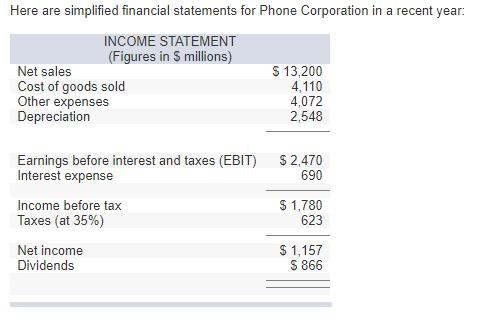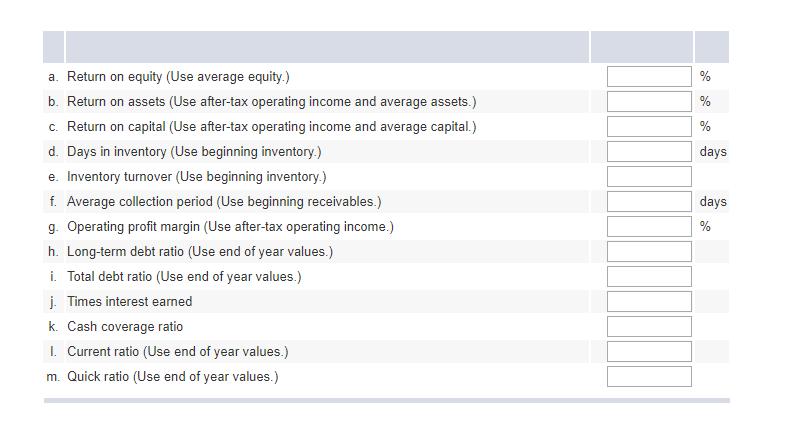Answered step by step
Verified Expert Solution
Question
1 Approved Answer
Here are simplified financial statements for Phone Corporation in a recent year: INCOME STATEMENT (Figures in 5 millions) Net sales Cost of goods sold



Here are simplified financial statements for Phone Corporation in a recent year: INCOME STATEMENT (Figures in 5 millions) Net sales Cost of goods sold Other expenses Depreciation Earnings before interest and taxes (EBIT) $2,470 Interest expense 690 Income before tax Taxes (at 35%) $ 13,200 4,110 4,072 2,548 Net income Dividends $ 1,780 623 $ 1,157 $ 866 BALANCE SHEET (Figures in 5 millions) Assets Cash and marketable securities Receivables Inventories Other current assets Total current assets Net property, plant, and equipment Other long-term assets Total assets Liabilities and shareholders equity Payables Short-term debt Other current liabilities End of Year $ 90 2,432 192 872 $ 3,586 19,983 4,226 $ 27,795 $ 2,574 1,424 816 Total current liabilities Long-term debt and leases Other long-term liabilities 6,188 Shareholders equity 10,024 Total liabilities and shareholders equity $ 27,795 $ 4,814 6,769 Start of Year $ 159 2,510 243 937 $ 3,849 19,925 3,780 $ 27,554 $ 3,050 1,578 792 $ 5,420 6,654 6,159 9,321 $ 27,554 Calculate the following financial ratios for Phone Corporation: (Use 365 days in a year. Do not round intermediate calculations. Round your percentage answers Return on equity , Return on assets , Return on capital and Operating profit margin to 2 decimal places and the rest to 2 decimal places.) a. Return on equity (Use average equity.) b. Return on assets (Use after-tax operating income and average assets.) c. Return on capital (Use after-tax operating income and average capital.) d. Days in inventory (Use beginning inventory.) e. Inventory turnover (Use beginning inventory.) f. Average collection period (Use beginning receivables.) g. Operating profit margin (Use after-tax operating income.) h. Long-term debt ratio (Use end of year values.) i. Total debt ratio (Use end of year values.) j. Times interest earned k. Cash coverage ratio 1. Current ratio (Use end of year values.) m. Quick ratio (Use end of year values.) % % % days days %
Step by Step Solution
★★★★★
3.40 Rating (156 Votes )
There are 3 Steps involved in it
Step: 1
h Long term Debt Ratio Long term Liabilities Total Ass...
Get Instant Access to Expert-Tailored Solutions
See step-by-step solutions with expert insights and AI powered tools for academic success
Step: 2

Step: 3

Ace Your Homework with AI
Get the answers you need in no time with our AI-driven, step-by-step assistance
Get Started


